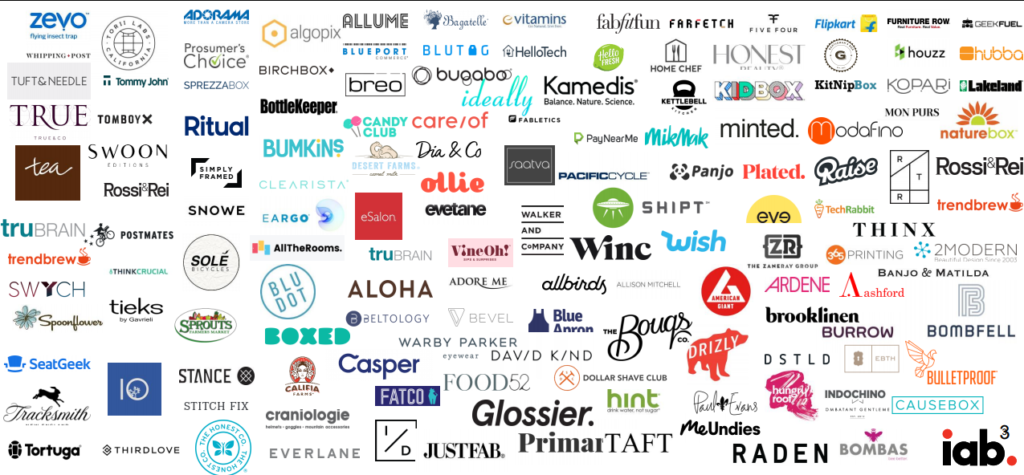6 Rosh Hashana Marketing Strategies for 2018
It’s Rosh Hashana, the Jewish new year, and what a robust year it’s been thus far. Apple became the first trillion dollar company, unemployment hits a rare low of 3.9%, and Kylie Jenner is on the cusp of being the youngest female billionaire in modern history (and Jeff Bezos is the wealthiest). Quite a year of ups and downs (it’s been real, Toys R’ Us) but mostly ups. So as we prepare for the Rosh Hashana season and think about Q4 possibilities, is your business riding the wave of growth for this coming year? Here are five ways to ensure your business has a sweet new year all year long.
True, Kosher is more of a specialty category with a small niche market and, yes, online grocery shopping, though a $20 billion industry and growing, still has problems solving last mile logistics. Those are certainly challenging hurdles for anyone. But the one company who can – and will – solve it will be Amazon, with Whole Foods providing wholesome, healthy value and niche, specialty products that kosher consumers are used to locally.
So how can kosher markets, manufacturers and food companies adapt to the reality that Amazon could, literally and figuratively, eat their lunch for them? Here are three industry-leading marketing strategies worth implementing now:
Don’t Just Think Rosh Hashana. Think “Shana”.
Shana means “year” in Hebrew, by the way, so I think you know where I’m going here. Think annually, not just holiday or seasonally. Rosh Hashana and the High Holidays are your Jewish Black Friday and Cyber Monday. This high-awareness holiday season is your way into consumers homes for the entire year. So think “long term customer” instead of “short term sale”.
Take the time to create an annual marketing plan that overachieves for the sake of the customer. Some questions you should be answering are: how are we improving our services this year? How can we focus more on customer retention? How can we prepare for an Amazon-centric world? How are we leveraging new technologies in our favor? Share your promises, advances, and services with your customer base now during Rosh Hashana and deliver on them throughout the year. If you only focus on the High Holidays, you’ll miss out on an entire year of opportunities.
Go Direct to Consumer.
Connect the dots: in 2017, more than 8,600 big box retail stores closed while 90% of overall category sales growth came online. See a connection? More big brands are going online and investing less in storefront or placing products on shelves. In 2018, there’s dozens of ways to market directly to the consumer – paid social, retargeting, email marketing, IoT, to name a few – so you’re out of excuses on inability to measure your marketing ROI from dying channels such as print or broadcast (attribution is a different story, you can still complain about that). DTC (direct-to-consumer) is the fastest growing segment of e-commerce marketing with companies like Glossier, Warby Parker, and Away being mentioned as often as Unilever, Proctor & Gamble, and Nestle (more on those guys below). This image showcasing the growth of DTC companies should tell you all you need to know:
So what’s stopping you from creating a direct to consumer approach to your marketing? The days of “borrowing” space or broadcast time within newspapers, TV and radio are over; you should be focusing on “acquiring” that audience for yourself. When you create a direct-to-consumer strategy, you control the story, you control the messaging, you control the frequency and you control the ROI. The technology, tools and possibilities are there and, in many case, it’s cheaper than simply “borrowing” eyeballs from someone else. The question is: are you truly weighing the opportunity costs? Speaking of which…
Think Opportunity Costs More Than Ad Costs.
“I get such a great deal on my ads and I’m good with that”, our clients tell us. We’ve come to the conclusion that our clients are some of the best negotiators in the world, without a doubt. They can unite nations. Unfortunately, that philosophy is pretty myopic. And it’s at that moment, we simply remind them: it’s not about the ad costs, it’s about the opportunity costs. For that weekly $1,000 print ad reaching an intangible number of eyeballs with limited metrics for success, we can create so many new marketing opportunities that can potentially yield measurable results, increased revenue and the chupacabra of modern marketers: customer data.
Here’s an example: we worked with a travel client – a heavy print advertiser – to create a more customer-centric website experience that invited engagement, inquiries and RFP’s. That season, they sold out two months earlier than forecasted, saving them thousands in print advertising costs. Not only did we help our client realize the opportunity costs of not having a smarter, customer-centric website (increased bounce rate, lack of data gathering, lack of mobile-first approach), we also helped them gain more opportunity on the back end to invest unused print ad dollars for other marketing opportunities.
It’s very easy to fall into the trap of Shiny New Object Syndrome, where you learn something new and think it’s the magic solution to the point where you fail to set goals, implement metrics for success and dismiss opportunity costs.
So ask yourself now: if I have $1000 to spend on Rosh Hashana marketing, what are all the possible opportunities available to me? If you don’t know, shoot us an email.
New Year’s Resolution: More Data.
Ask any seasoned marketer what they want more of next year. Answer prediction: more data.
To quote NewsCred Insights, “The new generation of brands and startups knows their customers and everything about them. Collecting identity, demographic, psychographic and social data and then building on that relationship through content and services is what differentiates winning brands.” How important is data science? Forbes predicts that there will be a shortfall of 190,000 data scientists needed to power big data insights. That’s how important data is.
Remember what we said about focusing on the Shana part of Rosh Hashana and the direct to consumer strategy? Well, that starts with data. Think about how you can you acquire, interpret, leverage and automate customer and prospect data. Because every data point you have can power smarter, more effective marketing tools and automations. All of which makes you more money while freeing up your time to do other things, like running your business or improving your services.
It’s 2018 and you’re a smart business owner. There’s no reason not to have a treasure trove of customer data at your fingertips. Don’t know how to get that data? Get marketing help. Don’t know how to interpret the data you have? Hire an agency. Don’t know how to turn your data into actionable results? Call in the marketing experts. How you approach our modern data-driven and algorithm-driven world will determine whether this is a year of succeeding or failing.
Forget Your Product. It’s About The Experience Now.
Here’s an interesting fact: 72% of millennials would rather purchase an experience than a product. Meaning they’d rather buy tickets to a food & wine tasting than be pitched on your latest pinot noir and cheeses. As consumers get bombarded multiple times daily on search, social media and email with, you can bet your product line will not nearly be as prominent as the big marketers.
Your advantage? Marketing an experience. Create a Food & Wine Experience like Royal Wines does every year (we’ll see you there). Create a pop-up Rosh Hashana shop in your supermarket with gourmet foods, gorgeous linens and table settings, and not just an aisle. Invite customers to a Sukkot event with entertainment to drive traffic to your location. What’s even better is that this yields one of the most effective marketing results: user-generated content (such as reviews, Instagram pics, social shares, etc.): 60% of consumers say user-generated content (UGC) is the most authentic form of content and 86% of consumers say authenticity is important when deciding what brands they support
Think about it. Most consumers can get your products, food, prescriptions or services cheaper, faster and (maybe) better online from Amazon, Seamless, Pharmacy.com, Handy.com, and hundreds of others. What do you as a small business have to truly offer? An experience.
Don’t Get FOMO’d.
I’ve been there. When our digital media had excess space available to sell, I was designated the closer. I would sell numerous clients on the discounted ad space, keeping our print, website and email list full during the lucrative High Holiday season. I literally FOMO’d my clients into the sale. And because I know how that works, my advice to you is: don’t get FOMO’d (fear of missing out).
If you’ve set up a strategic, data-driven, customer-centric marketing plan, you shouldn’t have any fears about missing out on ad space. Why? Because you’ll realize that most advertising is a top-of-funnel marketing strategy and will not yield success like a bottom-of-funnel marketing strategy (top-of-funnel = prospects; bottom-of-funnel = customers). Smart marketers are focusing on customer retention, creating customer ambassadors and user generated content, all of which significantly improves revenue and your P&L; weak marketers get fooled into thinking they’re missing out on the best ad space that ever existed. Rosh Hashana is the time to start refocusing your marketing, planning for annual returns and getting rid of the fear of missing out on questionable offers.
TO SUM IT UP: It’s a new year and there are new digital marketing innovations happening every day. Take this new year to rethink your brand, identify how to get more customer and use it to power a customer-centric brand… before Amazon eats your lunch. Start looking up now.



Comments are closed.